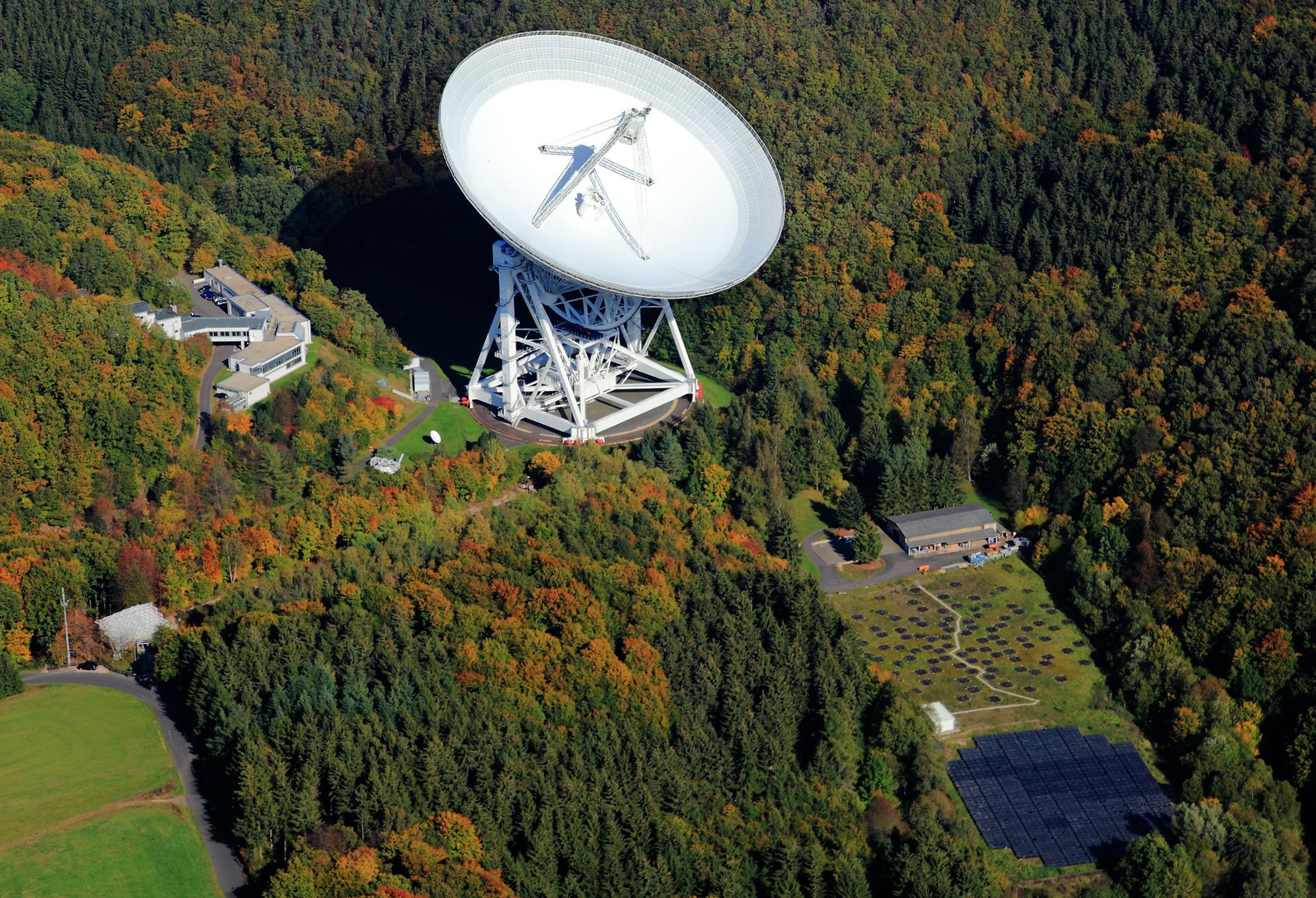Radio astronomers use radio waves to study objects in space. Using increasingly sophisticated observational methods, they look deep into the universe and locate, for instance, distant galaxies, rapidly rotating neutron stars (pulsars) and black holes. The Effelsberg radio telescope near Bad Münstereifel, with its 100-meter parabolic mirror, is a prominent representative of the telescopes used for this purpose, which are also interconnected in local to global networks to increase imaging sharpness and sensitivity.
Modern radio telescopes generate data at ever faster rates. "In the next generation of radio telescopes, data will be generated at rates comparable to all of today's Internet traffic," says Prof. Dr. Michael Kramer, director at the Max Planck Institute for Radio Astronomy in Bonn.
Researchers are therefore looking for completely novel ways to cope with this flood of data. "Diligence and large computers are no longer enough for this," says Prof. Dr. Frank Bertoldi of the Argelander Institute for Astronomy at the University of Bonn. "Machine learning" and "artificial intelligence" will in the future help researchers to filter out the interesting signals of the universe from the flood of data.
In order to acquire and exchange the necessary expertise, radio astronomers and data scientists from eight institutions in North Rhine-Westphalia have joined forces in the "NRW Cluster for Data-Intensive Radio Astronomy: Big Bang to Big Data" under the leadership of the Max Planck Institute for Radio Astronomy. The project will receive funding of up to three million euros over the next three years as part of the NRW "Profiling 2020" development program.
The essential purpose of the cluster is to network knowledge and coordinate the activities of radio astronomers, interested data scientists, and industry partners. "This is a concerted action that makes all of us stronger in research and teaching, as well as in the transfer of knowledge to practical applications through the exchange with our industrial partners," Michael Kramer and Frank Bertoldi agree. Both researchers are members of the Transdisciplinary Research Area "Building Blocks of Matter and Fundamental Interactions" at the University of Bonn.
Participating institutions:
The participating institutions include the Max Planck Institute for Radio Astronomy, the University of Bonn, Forschungszentrum Jülich, the Bonn-Rhein-Sieg University of Applied Sciences, the Ruhr-Universität Bochum, the TU Dortmund University, the University of Bielefeld and the University of Cologne.
Contact:
Prof. Dr. Michael Kramer
Direktor und Leiter der Forschungsabteilung Radioastronomische Fundamentalphysik
Max-Planck-Institut für Radioastronomie Bonn
Fon: +49 228 525-278
E-mail: mkramer@mpifr-bonn.mpg.de
Prof. Dr. Frank Bertoldi
Argelander-Institut für Astronomie
Universität Bonn
Fon: +49 228 73-6789
E-mail: bertoldi@astro.uni-bonn.de
Dr. Norbert Junkes
Presse- und Öffentlichkeitsarbeit
Max-Planck-Institut für Radioastronomie Bonn
Fon: +49 228 525-399
E-mail: njunkes@mpifr-bonn.mpg.de
Links:
Big Bang to Big Data (B3D)
https://b3d.nrw/
Radioteleskop Effelsberg
https://www.mpifr-bonn.mpg.de/effelsberg
Low Frequency Array (LOFAR)
https://www.mpifr-bonn.mpg.de/lofar
MeerKAT radio telescope
https://www.sarao.ac.za/gallery/meerkat/
SKA Observatory
https://www.skatelescope.org/
Atacama Large Millimeter/submillimeter Array (ALMA)
https://www.almaobservatory.org/en/home/
Atacama Pathfinder Experiment (APEX)
http://www.apex-telescope.org/ns/
Bausteine der Materie und fundamentale Wechselwirkungen (TRA Matter), Universität Bonn
https://www.uni-bonn.de/de/forschung-lehre/forschungsprofil/transdisziplinaere-forschungsbereiche/tra-2-matter




